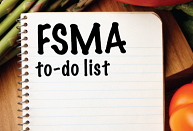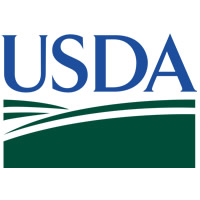

The compliance date extension affords covered entities the additional time necessary to ensure complete coordination across the supply chain in order to fully implement the final rule’s requirements

The compliance date extension affords covered entities the additional time necessary to ensure complete coordination across the supply chain in order to fully implement the final rule’s requirements

You might be the project lead on FSMA 204 and know the rule well but actually getting your company and it’s suppliers all in compliance will take a major team effort, even with the compliance deadline be extended. Regardless of what stage you’re in of your company’s compliance journey, you will always be educating someone on your team or a supplier on FSMA 204. This overview and guide will reinforce some things you already know, plus it is a great tool to share with your team and your suppliers.

Designed to address the increasingly complex compliance needs of stakeholders in the food industry, FSMA 204 Food Traceability Solutions combine FSMA 204 audits, training and the TRAKKEY digital traceability platform

This Episode’s theme: FDA’s FSMA 204 Traceability Rule and we’ll explore how the groundbreaking Partnership for Food Traceability (PFT) Watch the Recording

In an increasingly global world, supplier qualification systems help ensure food safety and increase diversity in the supply chain while helping companies manage disruptions and develop stronger long-term relationships with their suppliers, wherever they are located.

Roger Hancock, CEO of Recall InfoLink, discusses the importance of a fast and efficient recall, the perception of recalls by the general public and his goal to build a recall-ready community in the food industry.

Successful implementation of IoT technologies requires a strategic approach, ongoing monitoring and continuous improvement. Here’s how to get started.

“Frank is a visionary in the food supply chain, using his insight, knowledge and passion for innovation to enhance food safety and safeguard public health. We are excited to welcome him to the iFoodDS board of directors.”

The USDA Food Safety and Inspection Service (FSIS) has launched a new feature on its website that enables software developers to access data on recalls and public health alerts through an application programming interface (API). Through this new tool, developers can leverage FSIS recall data to create new products for consumers or incorporate them into existing digital services and mobile apps.

The Interagency Food Safety Analytics Collaboration (IFSAC)—a collaboration between the CDC, FDA and USDA FSIS—cites Campylobacter, non-O157 Shiga toxin-producing Escherichia coli (STEC) and refining foodborne illness source attribution estimates as its priorities for the next five years.